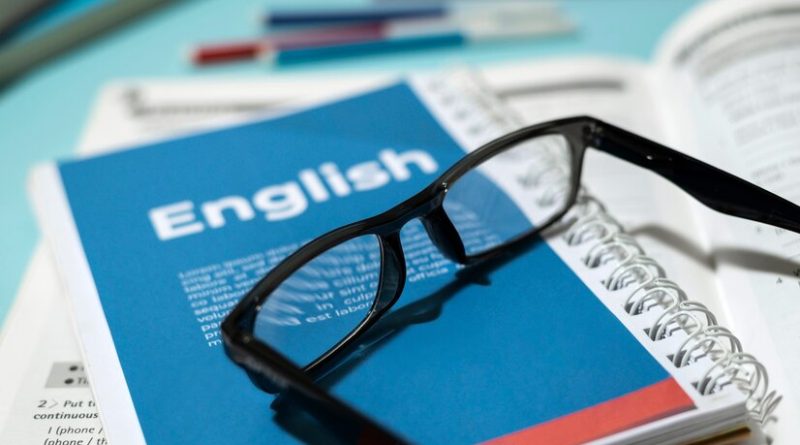Article Writing | Complete Format & Samples in PDF
Our mind is a place full of thoughts, and putting those thoughts into words with a purpose is article writing. Like, if you have something important to share – maybe an idea, some news, or a helpful tip, an article is your way of putting that into words and sharing it with the world, which people will enjoy and understand what you wanna convey. No matter what you’re writing, be it a school project, a blog, a story or something for fun, knowing how to write an article will help you connect with people and spread your thoughts across clearly.
Article writing class 12 is included in the syllabus to help students develop and express their thoughts both academically and overall, as it helps students with:
- Improving their vocabulary and communication
- Growing research, analytical, and critical thinking skills
- Helps them convey their thoughts on different topics effectively to the world.
But to reach that level, Class 12 English Syllabus has included article writing so that students must first understand what article writing is about, what an article is, what are types of articles, article format, and a few article writing samples, which will give them a clear knowledge of the topic.
What is Article writing?
Article writing is basically a process of expressing your thoughts on a specific topic in writing that is meant to inform, explain, or entertain readers. The writing piece follows a clear specific format and structure. Articles are mostly seen in newspapers, magazines, blogs, journals etc and they aim to provide knowledge, raise awareness or give useful information to the readers.
Let’s discuss in detail about article writing in this blog. Students can download the PDF for several article writing samples and practice questions.
Main Elements of an Article
Before knowing the format of article, let’s first know what are the key components that make up a good article:
- Title/Headline: The title should grab the reader’s attention and give them an idea of what the article is about. It should be concise, catchy, and relatable.
- Introduction: The introduction sets the tone for the article. It should be engaging and give the reader a reason to keep reading. This section usually contains a hook, a brief overview of the topic, and the purpose of the article.
- Body: The body of the article is where the main content lies. It’s typically divided into several paragraphs, each focusing on a specific aspect of the topic. Logical flow and relabtility are crucial in this section, with each paragraph leading naturally to the next.
- Conclusion: The conclusion wraps up the article, summarizing the main points and leaving the reader with something to think about. It may also include a call to action, encouraging the reader to engage further with the topic.
The Format of an Article
Sticking to the main topic and using a clear and simple format helps organize your thoughts and makes sure that your article is easy to read and understand by the targeted audience. Here’s a basic format of the article writing given and explained below:
1. Title
- Keep it short and creative.
- Use keywords that relate to the topic.
- Avoid vague or overly expressive titles.
2. Introduction
- Start with a hook: an interesting fact, quote, or question.
- Provide a brief overview of the topic.
- State the purpose of the article.
3. Body
- Paragraph 1: Introduce the main idea or argument.
- Paragraph 2: Expand on the main idea with supporting details or examples.
- Paragraph 3: Discuss any opposing views or additional perspectives, if applicable.
- Paragraph 4: Reinforce the main idea or explore its implications.
4. Conclusion
- Summarize the key points made in the body.
- Offer a final thought or insight.
- Include a call to action, if relevant.
Types of articles
- News articles: These focus on reporting current events or news. They provide factual, straightforward information about something that has recently happened or is happening now.
- Descriptive articles: These kinds of articles help readers visualise based on what’s written in the article’s content. The adjectives and phrases in this type must be used carefully to help readers visualise the description.
- Research articles: These are more academic and detailed, often found in journals. They present findings from research studies and are typically used to share new knowledge or discoveries in a particular field.
- Review articles: These articles offer a critique or evaluation of something, such as a book, movie, product, or service. They help readers decide whether something is worth their time or money.
- How-to articles: These provide step-by-step instructions or advice on how to do something. They are practical and often include tips, lists, or guidelines to help readers achieve a specific goal.
- Listicles: These are articles presented in the form of a list, such as “Top 10 Tips for Healthy Eating” . They are easy to read and popular for their quick, digestible format.
Article writing examples
Title: The Benefits of Mindfulness Meditation
Introduction: In today’s fast-paced world, finding ways to relax and de-stress has become essential. Mindfulness meditation, a practice rooted in ancient traditions, has gained immense popularity for its ability to improve mental and physical well-being. This article explores the benefits of mindfulness meditation and how you can incorporate it into your daily routine.
Body: Mindfulness meditation is more than just a relaxation technique; it’s a way to train your mind to stay focused on the present moment. Studies have shown that regular practice can reduce anxiety, improve concentration, and even boost immunity.
Conclusion: Mindfulness meditation offers a simple yet powerful way to enhance your quality of life. Whether you’re new to meditation or an experienced practitioner, making mindfulness a part of your daily routine can lead to significant long-term benefits.
Example 2.
Title: How can children keep fit and healthy?
Children can do regular physical activity to improve their fitness and overall health. Consistency is important for better results. Including exercise in daily life with other activities will help to maintain consistency.
There are multiple options available for exercise, such as a gym, park, cycling, skipping, joining a sports team, or working at home. Choose any option that suits you best. Having fun with exercise will keep you motivated for daily exercise.
Take a small step at a time, and it will show better results than one day of exercise. Doing a simple walk, eating healthy food, sleeping, and waking up on time will also help a lot. Just move your body and try to follow an exercise that uses your full body. So it will take less time and give better results. Exercise every day for 20 to 30 minutes and see the results.
How to write an engaging and creative article?
- Write about the topic you have knowledge about, or educate yourself thoroughly about the topic before writing.
- Understand your audience. The tone of the article can be formal, informal, informational, or persuasive, depending on the addressed audience.
- Keep things and tone simple and clear, and stick to the main topic instead of talking about multiple different things.
- Form an outline before starting to write, and never miss adding the conclusion, which provides closure about the topic to your audience.
- Use images, charts, or infographics wherever possible to make the article look interesting and attract the audience.
Mistakes to avoid while writing an article
- Lack of clarity and focus
- Ignoring the target audience
- Weak or misleading headlines
- Overusing jargon or complex language
- Neglecting to proofread and edit
- Failing to provide proper structure and flow
Article writing is an art that can be earned with lots of practice. By going through the format and all the tips provided in this blog, you can definitely not only craft good articles but also make a meaningful impact on the reader’s mind. Whether you’re writing for a school assignment, a blog, or a professional publication, understanding the key factors of article writing will help you succeed throughout. Happy writing!



